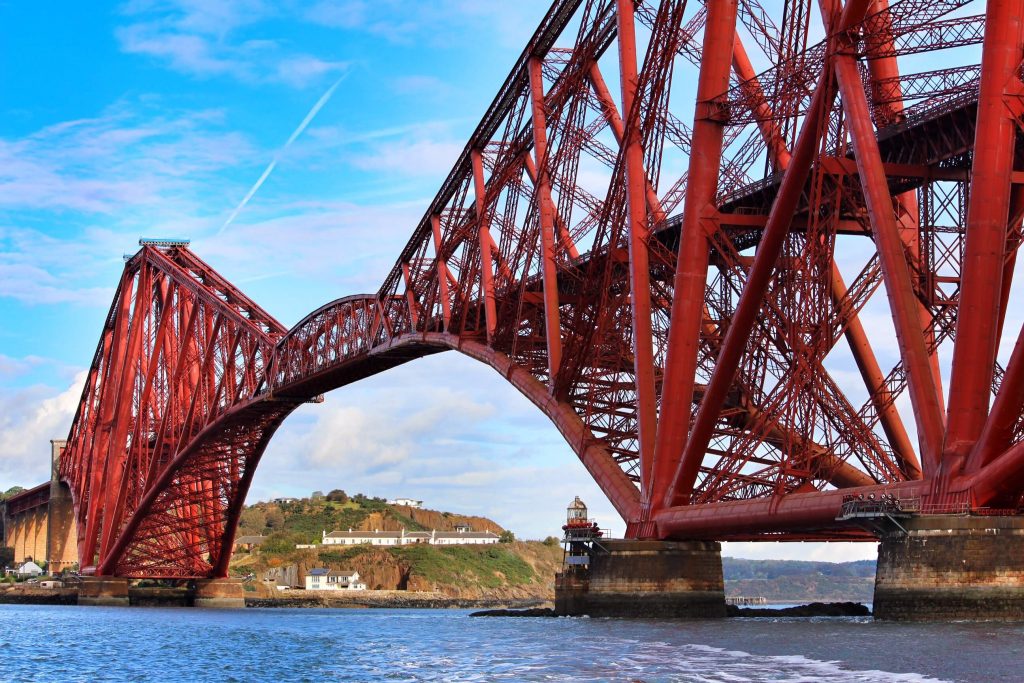The opening of the Forth Bridge

Forth bridge - Scotland
One of Britain’s most iconic structures opened on March 4 1890.
The Forth Bridge was a milestone in the development of railway civil engineering. Today, 200 trains use the bridge each day, carrying a total of three million passengers a year, according to Transport Scotland.
World records
It was the first major structure in Britain to be made of steel and its construction resulted in a continuous East Coast railway route from London to Aberdeen.
The first crossing of the Forth Bridge by the railway came in 1850 when the Edinburgh, Leith and Granton Railway started the world’s first ‘train ferry’ – a ferry boat specially designed by Thomas Bouch to take railway coaches – between Granton and Burntisland.
In August 1873, the North British Railway obtained authority to build a railway bridge across the Firth of Forth and construction of a suspension bridge, also designed by Thomas Bouch, began in 1878.
However, work on his bridge across the Forth stopped immediately pending a full inquiry when Bouch’s original Tay Bridge in Dundee collapsed during a storm in December 1879.
His suspension bridge plans were abandoned in 1881 and the newly formed Forth Bridge Railway Company invited new designs.
New plans
The bridge would cross the Forth between South Queensferry – now part of Edinburgh and North Queensferry in Fife – making use of the island of Inch Garvie.
Its design had to conform to specifications from the Admiralty, which stipulated the Forth remained a navigable channel. It also needed to satisfy the Board of Trade, which said the bridge must be rigid, stiff and able to carry the heaviest freight trains, following the recent disaster at the Tay Bridge.
John Fowler and his partner Benjamin Baker developed a cantilevered design that accounted for these restrictions. The contract for its construction was let to Messers Arrol & Co of Glasgow in 1882 and work on the bridge started in 1883.
Vast scale
- The Forth Bridge has three double cantilevers with two 1,700ft suspended spans between them – at the time the longest bridge spans in the world.
- Baker and Fowler’s bridge was the first major construction in Britain to be made from steel; the bridge incorporates 53,000 tonnes of the material.
- The rail level is 150ft (46m) above high water.
- Each of the towers has four steel tubes 12ft (3.7m) in diameter and reaches 361ft (110m) above high water. Their foundations extend 89ft below this into the river bed, making the total height from foundations to the top of the towers 137 metres.
- The total length of the bridge, including its approach viaducts is 2,467 metres.
- The main structure itself measures 1,630 metres portal to portal.
- It cost £3m to build and employed a workforce of 4,600 men at the height of construction.
The Prince of Wales – later King Edward VII – formally opened the bridge on 4 March 1890. He drove home a final, gold-plated rivet and at the same ceremony knighted Benjamin Baker.